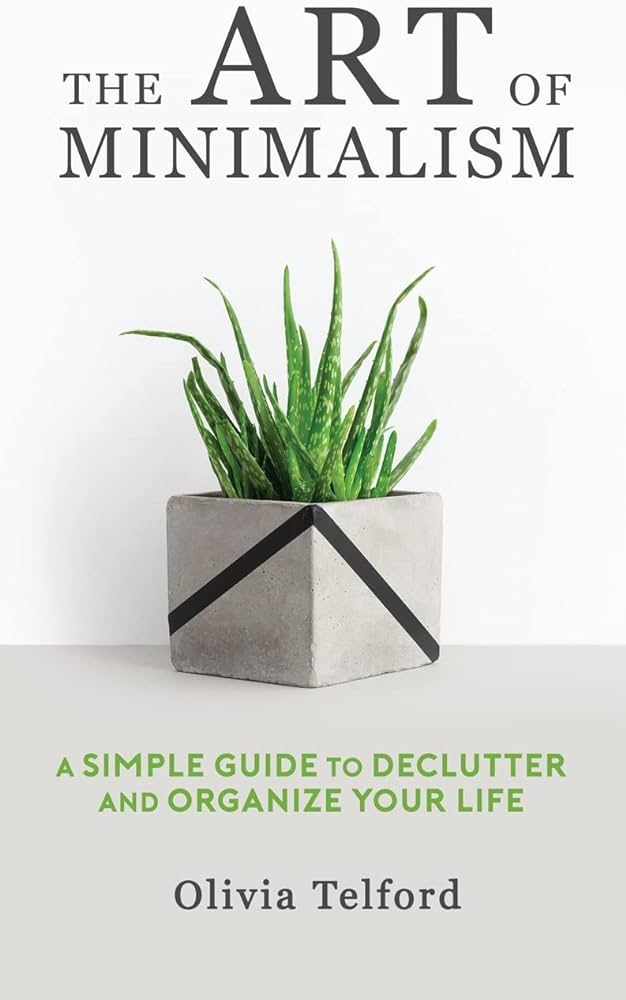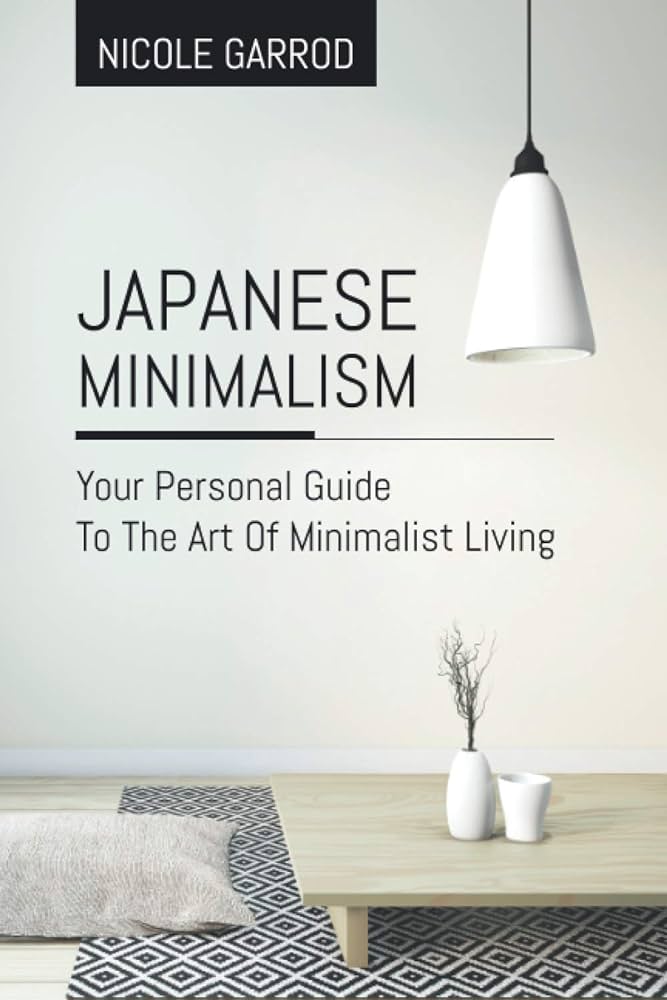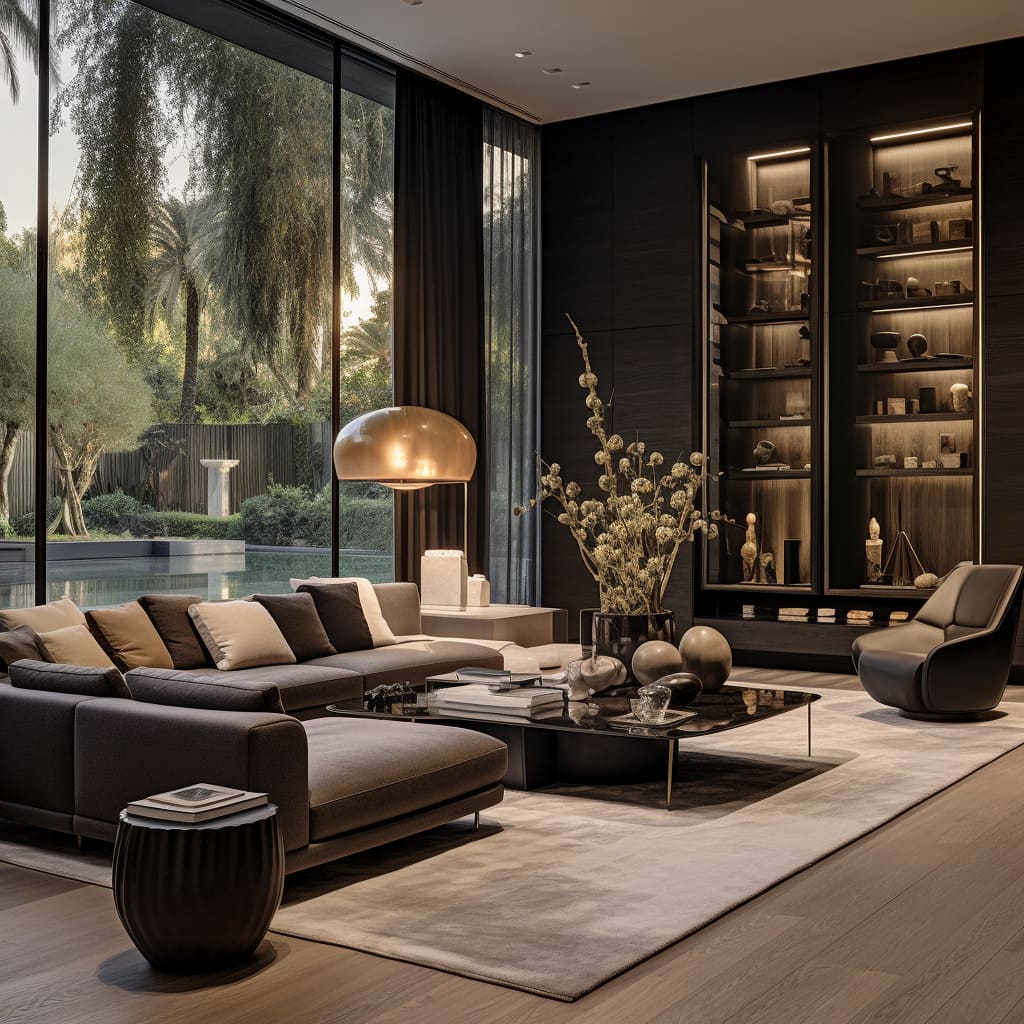Are you tired of being overwhelmed by clutter and constantly feeling stressed? Look no further than the art of minimalist living. This lifestyle approach embraces the idea of simplifying your surroundings and focusing on what truly matters. By reducing the excess and freeing yourself from the burden of material possessions, you can create a peaceful and purposeful living space that promotes clarity and contentment. Discover the transformative power of minimalism and unlock a new level of happiness and fulfillment in your life.

The Benefits of Minimalist Living
Minimalist living has gained popularity in recent years for its numerous benefits. By embracing a minimalist lifestyle, you can experience less clutter and more space in your living environment. The act of decluttering and letting go of unnecessary possessions allows you to create a clean and organized space that promotes a sense of calm and tranquility. With fewer belongings, you’ll have more physical space to move around and enjoy in your home.
One of the most significant benefits of minimalist living is the reduction in stress and anxiety that accompanies it. Clutter and disorganized spaces can contribute to feelings of overwhelm and can be visually overwhelming. By simplifying your surroundings, you eliminate visual distractions and create a peaceful atmosphere that promotes relaxation. As a result, minimalist living can significantly reduce stress and create a more serene living environment.
Improved focus and productivity are also the byproducts of minimalist living. With fewer possessions vying for your attention, you can direct your focus towards the things that truly matter: your goals, work, and personal well-being. By eliminating distractions and streamlining your environment, you can enhance your ability to concentrate on tasks, leading to increased productivity and efficiency in various aspects of your life.
Another advantage of minimalist living is the increased financial freedom it offers. By adopting a minimalist lifestyle, you naturally become more mindful of your spending habits and begin to prioritize what truly holds value in your life. This intentional approach to consumption leads to reduced impulse buying and unnecessary expenses. As a result, you can save money, pay off debts, or invest in experiences that bring you lasting joy rather than temporary fulfillment from material possessions.
Minimalist living also has a positive impact on your mental and emotional well-being. By letting go of the excess and focusing on the essential, you create space for gratitude, contentment, and inner peace. You learn to appreciate what you have rather than constantly chasing after more. This shift in mindset can lead to a profound sense of fulfillment and a deeper connection to the present moment. By embracing a minimalist lifestyle, you can cultivate greater mental clarity, emotional balance, and overall well-being.
Principles of Minimalist Living
There are several principles that guide the practice of minimalist living. By understanding and embodying these principles, you can fully embrace the minimalist lifestyle and its benefits.
Simplicity: Simplicity lies at the core of minimalist living. It involves stripping away the unnecessary and focusing on what truly matters to you. By simplifying your possessions, routines, and commitments, you create more space and time for the things that bring you joy and fulfillment.
Intentionality: Minimalist living emphasizes intentionality in all aspects of life. It involves making deliberate choices about what you bring into your life and intentionally curating your environment to align with your values and goals. By living with intention, you prioritize quality over quantity and ensure that everything in your life serves a purpose.
Essentialism: Essentialism is the philosophy of focusing on the essential few rather than the trivial many. It involves identifying and prioritizing what truly adds value to your life and letting go of the rest. By practicing essentialism, you create space for what truly matters and eliminate the excess that weighs you down.
Mindfulness: Mindfulness plays a crucial role in minimalist living. It involves being present and fully engaged in each moment, appreciating the simplicity and beauty of life. By cultivating mindfulness, you become more aware of your consumption patterns, thoughts, and emotions, allowing you to make intentional choices that align with your values.
Quality over Quantity: The principle of quality over quantity encourages you to prioritize the quality and durability of your possessions over accumulating a large quantity of items. By investing in high-quality, long-lasting items, you reduce waste and ensure that your belongings bring you lasting satisfaction and joy.
By embracing these principles, you can create a minimalist lifestyle that aligns with your values and brings you the benefits of simplicity, intentionality, and mindful living.

Decluttering Your Living Space
Decluttering your living space is a fundamental step towards embracing minimalist living. It involves purging unnecessary items and organizing what remains in a thoughtful and efficient manner. Here are some strategies to help you declutter your living space effectively.
Understanding Clutter: Clutter can take different forms, including physical, digital, and mental clutter. Physical clutter refers to the excess belongings that accumulate in your living environment. Digital clutter includes the overwhelming number of files, emails, and notifications that can clutter your digital devices. Mental clutter refers to the excessive thoughts, worries, and distractions that occupy your mind. By understanding the different forms of clutter, you can begin to address them intentionally.
The KonMari Method: The KonMari Method, popularized by Marie Kondo, is a decluttering approach that focuses on decluttering by category rather than by room. It involves assessing each item’s value and deciding whether it sparks joy in your life. By using this method, you can make intentional decisions about what to keep and what to let go of, ensuring that your living space is filled only with items that bring you joy and serve a purpose.
The 80/20 Rule: The 80/20 rule, also known as the Pareto Principle, suggests that 80% of your belongings are rarely used or unnecessary. By embracing this rule, you can begin to identify the items that truly add value to your life and let go of the rest. Remember that freeing yourself from the burden of excess possessions allows you to create a more organized and serene living environment.
One-In-One-Out Rule: The one-in-one-out rule is a simple yet effective strategy to prevent clutter from building up again once you’ve decluttered. It involves committing to remove one item from your living space whenever you bring in a new item. By following this rule, you ensure that your possessions remain intentional and clutter-free.
Digital Decluttering: Just like physical clutter, digital clutter can also affect your well-being and productivity. Digital decluttering involves organizing your digital files, unsubscribing from unnecessary newsletters, and minimizing the number of apps and notifications on your devices. By decluttering your digital life, you create a more streamlined and focused digital environment.
By implementing these decluttering strategies, you can transform your living space into a clean, organized, and intentional environment that promotes wellbeing and minimalist living.
Adopting a Minimalist Wardrobe
Adopting a minimalist wardrobe is another aspect of minimalist living that can have a profound impact on your life. By curating a wardrobe that aligns with your personal style and values, you can simplify your daily choices and create a sense of ease and confidence. Here are some steps to help you adopt a minimalist wardrobe.
Identifying Your Personal Style: Start by identifying your personal style and what truly resonates with you. Consider your lifestyle, preferences, and the image you want to project. By understanding your personal style, you can make intentional choices when selecting clothing items and accessories.
Capsule Wardrobe Concept: The concept of a capsule wardrobe involves curating a collection of versatile, high-quality clothing items that can be mixed and matched to create a variety of outfits. By focusing on a core collection of clothing pieces that you love and that suit your personal style, you can simplify your wardrobe and eliminate decision fatigue when getting dressed.
Quality vs. Quantity Clothing: When building a minimalist wardrobe, prioritize quality over quantity. Invest in well-made, durable clothing items that will last for years rather than trendy, disposable fashion pieces. By focusing on quality, you not only reduce waste but also ensure that your wardrobe remains timeless and versatile.
Organizational Strategies: Implement organizational strategies to keep your minimalist wardrobe tidy and functional. Use storage solutions like clothing racks, drawer dividers, and clear containers to enhance visibility and accessibility. By keeping your clothing neatly organized, you simplify your daily routine and make getting dressed a breeze.
Sustainable Fashion Choices: Consider making sustainable fashion choices when building your minimalist wardrobe. Opt for clothing made from eco-friendly materials like organic cotton, linen, or recycled fibers. Support ethical and transparent fashion brands that prioritize fair labor practices and minimize their environmental impact. By choosing sustainable fashion, you align your wardrobe choices with your values and contribute to a more conscious and responsible fashion industry.
By adopting a minimalist wardrobe, you can simplify your morning routine, reduce decision fatigue, and feel confident and put-together in every outfit you wear.

Minimalist Home Decor
Minimalism extends beyond decluttering and wardrobe choices – it also encompasses your home decor. By adopting minimalist home decor principles, you can create a peaceful and harmonious living environment. Here are some key elements of minimalist home decor.
Neutral Color Palettes: Minimalist home decor often favors neutral color palettes, including whites, grays, and earth tones. These colors create a serene and calming atmosphere, allowing other elements, like textures and shapes, to take center stage. By embracing a neutral color palette, you create a timeless and elegant backdrop for your living space.
Functional Furniture: Minimalist home decor emphasizes functional furniture that serves a purpose while maintaining clean lines and simplicity. Invest in multi-purpose furniture pieces that provide storage solutions or serve dual functions. By choosing furniture that is both aesthetically pleasing and practical, you optimize your living space and minimize clutter.
Decluttered Surfaces: Minimalism in home decor involves keeping surfaces clutter-free and visually clean. Avoid excessive decorations and knick-knacks that can create visual noise. Instead, opt for a few carefully selected items that bring you joy and enhance the overall feel of the space. By decluttering your surfaces, you create a sense of openness and tranquility.
Natural Materials: Incorporating natural materials into your home decor adds warmth and texture. Use materials like wood, stone, and natural fibers to bring a sense of nature indoors. By incorporating these elements, you create a connection to the natural world and promote a sense of calm and comfort.
Plants and Indoor Greenery: Adding plants and indoor greenery is a popular minimalist home decor choice. Plants not only bring life and vibrancy to your living space but also provide numerous benefits, including improved air quality and reduced stress levels. By incorporating plants into your home decor, you create a fresh and inviting atmosphere.
By embracing minimalist home decor principles, you can create a living environment that is visually appealing, functional, and conducive to relaxation and well-being.
Minimalist Digital Lifestyle
In an increasingly digital world, adopting a minimalist approach to your digital life is essential for maintaining balance and well-being. By streamlining your digital activities, you can reduce distractions and create a more meaningful online experience. Here are some strategies for cultivating a minimalist digital lifestyle.
Digital Detox: Take periodic breaks from digital devices to recharge and reconnect with the present moment. Designate specific times or days when you disconnect from social media, emails, and other digital distractions. Use this time to engage in activities that nourish your mind and body, such as reading, spending time in nature, or connecting with loved ones.
Organizing Digital Files: Digital clutter can be overwhelming and hinder your productivity. Organize your digital files and create a systematic file storage system. Delete unnecessary files, organize folders, and use descriptive file names to enhance accessibility and reduce search time. By decluttering your digital files, you create a more streamlined and efficient digital environment.
Streamlining Online Activities: Become more intentional about your online activities. Limit the number of social media platforms you engage with and unsubscribe from email newsletters that no longer serve a purpose. Unfollow accounts that don’t align with your values or contribute positively to your well-being. By streamlining your online activities, you create a more focused and meaningful online experience.
Digital Minimalism Apps: Utilize digital minimalism apps to help you in your journey towards a minimalist digital lifestyle. These apps can help you track and manage your screen time, block distracting websites, or organize your digital files. Choose apps that align with your goals, and use them as tools to support your digital well-being.
Mindful Social Media Use: Practice mindful social media use by being intentional about the content you consume and share. Set boundaries for yourself in terms of the time you spend on social media and the types of content you engage with. Be mindful of the emotional and mental impact of social media on your well-being and adjust your usage accordingly.
By adopting a minimalist digital lifestyle, you can regain control over your online activities, reduce digital overwhelm, and cultivate a healthy relationship with technology.

Minimalist Traveling
Minimalism can extend to your travel experiences as well. By adopting a minimalist approach to travel, you can reduce stress, enhance your experiences, and make a positive impact on the environment. Here are some ways to embrace minimalist traveling.
Packing Light: Traveling with a minimalist mindset means packing only the essentials. Prioritize versatile clothing pieces that can be mixed and matched, and pack travel-sized toiletries to minimize baggage weight. By packing light, you can move with ease and have more freedom to explore.
Versatile Travel Essentials: Choose travel essentials that serve multiple purposes. For example, a lightweight scarf can double as a blanket or a shawl, and a travel pillow can also be used as lumbar support during long bus rides. By selecting versatile items, you maximize their utility while minimizing the number of items you need to carry.
Experiences over Souvenirs: Instead of collecting numerous souvenirs, focus on collecting memories and experiences. Invest in activities and adventures that allow you to immerse yourself in the local culture and create lasting memories. By prioritizing experiences, you can avoid accumulating unnecessary material possessions and savor the moments that truly matter.
Sustainable Travel Practices: Embrace sustainable travel practices to minimize your environmental impact. Opt for eco-friendly accommodations, support local businesses, and choose public transportation when possible. Respect local customs and minimize your use of single-use plastics. By being mindful of your impact, you can travel responsibly and contribute positively to the destinations you visit.
Mindful Travel Planning: Approach travel planning with intentionality and mindfulness. Research your destinations and prioritize the activities and sights that resonate with you the most. By selecting fewer destinations and allowing for more downtime, you can truly immerse yourself in the places you visit and avoid feeling rushed or overwhelmed.
By adopting a minimalist approach to traveling, you can create more meaningful and sustainable travel experiences that leave a positive impact on both your life and the destinations you visit.
Minimalist Cooking and Meal Planning
Minimalism can also extend to your cooking and meal planning practices. By simplifying your approach to food, you can enjoy nutritious meals while minimizing waste and time spent in the kitchen. Here are some tips for minimalist cooking and meal planning.
Simple and Healthy Recipes: Embrace simple and healthy recipes that require minimal ingredients and preparation time. Focus on whole foods and prioritize nutrient-dense meals that fuel your body and promote well-being. By simplifying your recipes, you can enjoy delicious meals without the need for complicated cooking techniques or lengthy ingredient lists.
Meal Prep and Batch Cooking: Streamline your cooking process by implementing meal prep and batch cooking techniques. Dedicate a specific time each week to prepare ingredients and cook larger portions that can be divided into individual meals. By doing so, you save time throughout the week and always have ready-to-eat meals on hand.
Kitchen Essentials: Minimize kitchen clutter by investing in essential cooking tools and utensils. Rather than collecting numerous gadgets and appliances, focus on must-have items like a good chef’s knife, cutting board, and versatile cookware. By decluttering your kitchen and keeping only the essentials, you create a functional and efficient cooking space.
Reducing Food Waste: Minimize food waste by planning your meals and buying only what you need. Use leftovers creatively to create new dishes or incorporate them into future meals. Freeze excess ingredients or meals that you won’t consume immediately to avoid spoilage. By reducing food waste, you save money and minimize your impact on the environment.
Mindful Eating Practices: Practice mindful eating by savoring each bite and paying attention to your body’s hunger and fullness cues. Avoid mindless snacking and emotional eating by creating a peaceful eating environment free from distractions. By adopting mindful eating practices, you can develop a healthier relationship with food and enjoy a more connected and mindful dining experience.
By applying minimalist principles to your cooking and meal planning, you can simplify your culinary experience and create nourishing meals that support your well-being.

Minimalist Time Management
Time management is essential for living a balanced and fulfilling life. By adopting minimalist time management strategies, you can prioritize meaningful activities, reduce stress, and find harmony in your day-to-day life. Here are some principles of minimalist time management.
Prioritizing Meaningful Activities: Identify the activities that bring you the most joy and fulfillment and prioritize them in your schedule. Evaluate your commitments and eliminate those that don’t align with your values or contribute positively to your life. By prioritizing meaningful activities, you create more space for the things that truly matter.
Creating Routines: Routines can provide structure and stability in your daily life. Create morning and evening routines that help you start and end your day with intention. Incorporate habits like exercise, meditation, or journaling that support your well-being. By establishing routines, you cultivate a sense of balance and consistency in your life.
Eliminating Time-wasting Habits: Identify time-wasting habits and eliminate or minimize them to optimize your productivity. This may include reducing time spent on social media or limiting unnecessary screen time. Be mindful of procrastination tendencies and develop strategies to overcome them. By eliminating time-wasting habits, you free up time for activities that align with your goals and values.
Single-tasking vs. Multitasking: Embrace single-tasking and focus on one activity at a time rather than attempting to multitask. Multitasking can lead to decreased productivity and increased stress levels. By dedicating your full attention to one task, you can complete it more efficiently and enjoy a greater sense of accomplishment.
Finding Work-Life Balance: Strive to find a balance between work, personal life, and self-care. Set boundaries and create space for relaxation, hobbies, and spending time with loved ones. By finding work-life balance, you can avoid burnout and experience greater overall well-being.
By applying minimalist time management principles, you can optimize your schedule, prioritize meaningful activities, and find a sense of harmony in your day-to-day life.
Embracing Minimalist Mindset
Beyond physical possessions and lifestyle choices, embracing a minimalist mindset is the foundation of minimalist living. By cultivating a minimalist mindset, you can experience profound shifts in your perspective and find joy in simplifying your life. Here are some key elements of a minimalist mindset.
Letting Go of Attachment: Minimalism encourages you to let go of attachment to material possessions and external validation. By realizing that true happiness and contentment come from within, you can free yourself from the constant pursuit of more. Embrace a mindset of detachment and focus on experiences and relationships rather than accumulating possessions.
Gratitude and Contentment: Cultivate gratitude and contentment by appreciating what you have rather than focusing on what you lack. Practice gratitude daily by acknowledging the blessings in your life, small or big. By cultivating gratitude and contentment, you can shift your perspective and find joy and satisfaction in the present moment.
Living in the Present Moment: Embrace the present moment by practicing mindfulness and being fully engaged in each experience. Avoid dwelling on the past or constantly chasing after the future. By embracing the present moment, you can find peace, clarity, and joy in the simplicity of life.
Embracing Imperfections: Embrace imperfections, both in yourself and in your environment. Let go of the need for perfection and accept that life is inherently messy and unpredictable. By embracing imperfections, you release unnecessary pressure and allow yourself to be authentic and vulnerable.
Finding Joy in Less: Minimalism teaches you to find joy and fulfillment in less. Simplify your life and focus on the essential. By eliminating excess and embracing a minimalist lifestyle, you create space for what truly brings you joy and find happiness in the simplicity of life.
By embracing a minimalist mindset, you can experience a deep sense of freedom, contentment, and fulfillment in all aspects of your life.
In conclusion, minimalist living offers numerous benefits, including less clutter and more space, reduced stress and anxiety, improved focus and productivity, increased financial freedom, and enhanced mental and emotional well-being. By understanding and applying the principles of simplicity, intentionality, essentialism, mindfulness, and quality over quantity, you can embrace minimalist living and experience the positive transformations it brings. Whether it’s decluttering your living space, adopting a minimalist wardrobe, incorporating minimalist home decor, streamlining your digital lifestyle, embracing minimalist travel, practicing minimalist cooking and meal planning, managing your time mindfully, or embracing a minimalist mindset, minimalism has the power to simplify your life, cultivate inner contentment, and create an environment that supports your well-being and personal growth. Embrace the art of minimalist living and discover the joy and freedom that comes from living with less.
